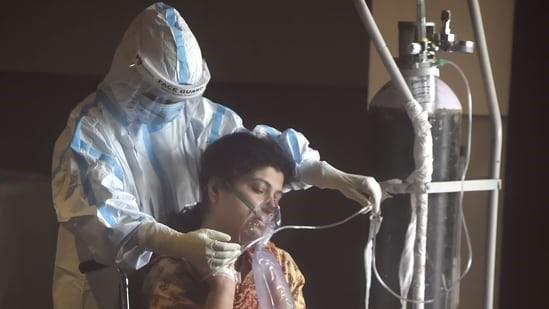
New study finds why long COVID patients suffer from breathlessness

Long COVID patients are likely to have microscopic damage in their lungs that cannot be detected in routine tests and this is probably the reason why they continue to suffer from breathlessness even after they have recovered from the infection.
These findings of abnormalities in lungs of COVID patients from a pilot study, which involved 36 patients, is really the “first evidence” to be emerging on how COVID can cause underlying damage to lungs. Many long COVID patients have been complaining of breathlessness as a symptom but experts were unsure whether it was triggered by other factors such as tiredness, changes in breathing patterns or something else.
Dr Emily Fraser, a consultant at Oxford university hospitals and a co-author of the study told The Guardian that it is the first study to demonstrate lung abnormalities in people suffering from long COVID and who suffer from breathlessness and were unable to find the reason. These results however clearly revealed the virus is causing some kind of persistent abnormality within the microstructure of the lungs or in the pulmonary vasculature.
However, more work was required to prove these findings, including the relation between breathlessness and the apparent abnormalities, said Fraser, according to the report.
These findings, published in the bioRxiv pre-print server, can be critical for people having to deal with long COVID symptoms, said clinicians. The study has also significantly shown that though the structure of the lung appears normal, they are no longer being efficient in doing what it is meant to do – exchange carbon dioxide and oxygen. Such studies are breaking new ground highlighting physiological differences seen in people with long COVID.
Also Read: NeoCov, new type of coronavirus, causes more deaths, says study
The scientific community is welcoming these initial findings as they seem to fit in with other data on lung perfusion defects post-Sars-CoV-2 infection seen in adults as well as adolescents.
How the study is being done
The study, which hopes to test 400 participants, will deploy a specialised MRI imaging technique in which patients will breathe in xenon gas while lying in a scanner. And the researchers will trace the movement of the gas as it moves from the lungs into the bloodstream.
It will then give a reading of how the lungs are functioning and will be effective than just a normal CT scan which shows the structure of the lungs. Three groups were studied: long COVID patients who had done normal CT scans, people who had been hospitalised with COVID for more than three months and were not experiencing long COVID, and a healthy control group.
The initial results have revealed the transfer of gas from lungs to the bloodstream was “significantly impaired” even when the other tests were normal. Similar abnormalities have been detected in COVID patients who had been hospitalised with a more severe disease.
Further, the team wanted to study what proportion of patients with long COVID have abnormal scans, and figure out how critical is this abnormality and whether it improves over time.
However, Fraser said in the news report that rehabilitation programmes like breathing retraining for those with disordered patterns of breathing should continue. She believed that such rehabilitation strategies were useful to help people not to get disheartened.


